numbers 1 to 20 in arabic Pronunciation & writing
Numbers are the building blocks of everyday communication, and in Arabic, the numbers 1 to 20 in arabic hold a special significance beyond their numerical value.
To learn more about the rest of the numbers from 1 to 100, you can visit this link: Arabic numbers 1 to 100
Here’s a glimpse into their importance and diverse uses:
numbers 1 to 20 in arabic: Foundation for Everyday Interactions
Numbers are essential for navigating daily life. Bargaining at a market (“urid khamsat kilos من التفاح (min al-tuffaḥ)” – I want five kilograms of apples),
discussing bus schedules (“al-autobus yaʾati baʿd sitt daqāʾiq” (الأوتوبيس يأتي بعد ست دقائق) – The bus comes in six minutes),
or ordering food (“urid thalatha falafel” (أريد ثلاثة فلافل) – I want three falafel), all rely on a solid foundation in Arabic numbers.
numbers 1 to 20 in arabic: Unlocking Dates and History
Dates on historical buildings, documents, and even birth certificates are often written in numerals.
Knowing how to read these numbers 1 to 20 in arabic , like “ʿishrun wa arbaʿah” (عشرين وأربعة) for 24, allows you to delve deeper into the past and understand historical timelines.
numbers 1 to 20 in arabic: Mastering the System
Arabic employs a unique system for numbers eleven to nineteen. Understanding how these are formed (“Ithna ‘Ashar” (اثنا عشر) for twelve,
literally meaning “two and ten”) is crucial for grasping the logic behind the numbering system as a whole.
numbers 1 to 20 in arabic: Cultural Significance
Numbers can hold symbolic value in Arabic culture. The twelve months of the Islamic calendar mark religious observances and historical events.
Additionally, some architectural features with specific numbers, like the twelve decorative minarets on a mosque, might hold symbolic meaning.
numbers 1 to 20 in arabic: Folklore and Proverbs
Numbers often appear in folktales, proverbs, and cultural expressions, offering insights into traditional beliefs and values.
Understanding these references can enrich your understanding of Arabic culture.
Learning these first twenty numbers is a stepping stone to mastering basic Arabic communication.
By appreciating their importance and diverse uses, you’ll gain a deeper understanding of the language and its connection to the Arabic world.
number 1 in arabic
The number one in Arabic is واحد (wahid), pronounced with a long “ah” sound in “wah” and a short “ee” sound in “hid.” It translates literally to “one” or “single.”
| Pronunciation | Arabic | English |
|---|---|---|
| Wah-hid | واحد | One |
| hunāk maktab wahid fī al-ghurfah | هناك مكتب واحد في الغرفة | There is one desk in the room. |
number 2 in arabic
The number two in Arabic is اثنان (ithnān), pronounced with a short “i” sound in “ith,” followed by a strong “th” sound like in “thing,” and ending with “nan” with a slight nasal emphasis. It translates to “two.”
| Pronunciation | Arabic | English |
|---|---|---|
| Ith-nan | اثنان | Two |
| yal’abān ithnān min al-ʾatfāl fī al-ḥadīqah | يلعب اثنان من الأطفال في الحديقة | Two of the children are playing in the garden. |
number 3 in arabic
We already covered the pronunciation and basic meaning of ثلاثة (thalāthah), which translates to “three.”
| Pronunciation | Arabic | English |
|---|---|---|
| Thalāthah | ثلاثة | Three |
| aḥtāj ilā thalāthah aqlam jadidah | أحتاج إلى ثلاثة أقلام جديدة | I need three new pens. |
number 4 in arabic
The number four in Arabic is أربعة (arbaʿa), pronounced with a strong guttural “a” sound at the beginning (similar to the “a” in “father” but deeper in the throat), followed by “ra” like in “run,” a short “ba” sound, and a final “aa” with a slight emphasis.
The character ع (ʿain) represents a unique sound not found in English, a deep guttural stop similar to a forceful clearing of the throat.
| Pronunciation | Arabic | English |
|---|---|---|
| Arbaʿa | أربعة | four |
| taḥtāj hādhihi al-lawhah ilā arbaʿah iṭārāt | تحتاج هذه اللوحة إلى أربعة إطارات | This painting needs four frames. |
number 5 in arabic
The number five in Arabic is خمسة (khamsah), pronounced with a voiceless “kh” sound like the “ch” in “loch” (Scottish for lake), followed by “am” with a short “a” sound, and ending with a strong “sa” with emphasis.
| Pronunciation | Arabic | English |
|---|---|---|
| Khamsah | خمسة | five |
| li-di khamsah dirham | لدي خمسة دراهم | I have five dirhams |
number 6 in arabic
The number six in Arabic is ستة (sittah), pronounced with a soft “s” sound, followed by a short “i” sound, and ending with a strong “ta” with emphasis.
| Pronunciation | Arabic | English |
|---|---|---|
| Sittah | ستة | six |
| li-di sittah ishqaq | لدي ستة أشقاء | I have six siblings. |
number 7 in arabic
The number seven in Arabic is سبعة (sabʿa), pronounced with a soft “s” sound, followed by a short “a” sound (like the “a” in “cat”), a strong emphasis on the “ba” sound, and ending with a short “aa” sound.
| Pronunciation | Arabic | English |
|---|---|---|
| Sabʿa | سبعة | seven |
| li-di sabʿa kutub madrasiyyah | لدي سبعة كتب مدرسية | I have seven textbooks. |
number 8 in arabic
The number eight in Arabic is ثمانية (thamania), pronounced with a soft “th” sound like in “the,” followed by “ah,” “maa,” a slight emphasis on the “ni” sound, and ending with a short “ah” again.
| Pronunciation | Arabic | English |
|---|---|---|
| Thamaniya | ثمانية | eight |
| li-di thamania saʿāt hatta mawʿid al-imtiḥān | لدي ثمانية ساعات حتى موعد الامتحان | I have eight hours until the exam. |
number 9 in arabic
The number nine in Arabic is تسعة (tisʿa), pronounced with a soft “t” sound, followed by a short “i” sound, a strong emphasis on the “sa” sound, and ending with a short “aa” sound.
| Pronunciation | Arabic | English |
|---|---|---|
| Tisʿa | تسعة | nine |
| li-di tisʿa kilaab | لدي تسعة كلاب | I have nine dogs. |
number 10 in arabic
The number ten in Arabic is عشرة (ʿashrah), pronounced with a deep guttural “ʿain” sound (similar to a forceful clearing of the throat) followed by “sh” like in “ship,” “ra” like in “run,” and ending with a short “ah” sound.
| Pronunciation | Arabic | English |
|---|---|---|
| ʿAshrah | عشرة | ten |
| li-di ʿashrah daqāiq li-l-ittiṣāl bik | لدي عشرة دقائق للاتصال بك | I have ten minutes to call you. |
Pronunciation and writing: Numbers from 11 to 20
numbers 1 to 20 in arabic represent the continuation of the counting sequence. At 11, we find “أحد عشر”, followed by “اثنا عشر” for 12, and “ثلاثة عشر” for 13.
These numbers maintain the pattern of adding “عشر” (ten) to the units place.
Moving on, we reach “أربعة عشر” for 14, “خمسة عشر” for 15, and so forth until “عشرون” (20).
These numbers mark a transition from the initial single digits to the double digits, signifying a broader range of quantities and possibilities.
They are fundamental in various contexts, from age representation to numerical calculations and beyond, laying the groundwork for more complex mathematical concepts.
number 11 in arabic
The number eleven in Arabic is أحد عشر (iḥdā ʿashar).
It’s not simply “ten one” like some languages. Here’s a breakdown:
- أحد (iḥd): This translates to “one.”
- عشر (ʿashar): This, as we learned earlier, translates to “ten.”
However, when referring to numbers from eleven to nineteen, Arabic uses a special construction. أحد عشر (iḥdā ʿashar) literally translates to “one ten,” but it specifically means “eleven.”
| Pronunciation | Arabic | English |
|---|---|---|
| Iḥ-da ʿAsh-ar | أحد عشر | eleven |
| li-di iḥdā ʿashar kitāban | لدي إحدى عشر كتابًا | I have eleven books. |
number 12 in arabic
The number twelve in Arabic is اثنا عشر (ithnā ʿashar). Similar to eleven, it follows the special construction used for numbers from eleven to nineteen. Here’s a breakdown:
- اثنا (ithnā): This translates to “two.”
- عشر (ʿashar): As we learned before, this translates to “ten.”
- Ithnā ʿashar literally translates to “two ten,” but it specifically means “twelve.”
| Pronunciation | Arabic | English |
|---|---|---|
| Ith-na ʿAsh-ar | اثنا عشر | twelve |
| yaḥtāj al-furn ilā ithnā ʿashar daqīqah li-tasakhīn | يحتاج الفرن إلى اثنا عشر دقيقة لتسخين | The oven needs twelve minutes to preheat. |
number 13 in arabic
Following the pattern for numbers eleven to nineteen, thirteen combines the word for “three” and “ten.”
- ثلاثة (thalāthah): This translates to “three.”
- عشر (ʿashar): As we learned before, this translates to “ten.”
Thalāthah ʿAshar literally translates to “three ten,” but it specifically means “thirteen.”
| Pronunciation | Arabic | English |
|---|---|---|
| Tha-la-tha ʿAsh-ar | ثلاثة عشر | thirteen |
| ishtareit thalāthah ʿashar tuffaha | اشتريت ثلاثة عشر تفاحة | I bought thirteen apples. |
number 14 in arabic
Following the pattern for numbers eleven to nineteen, fourteen combines the word for “four” and “ten.”
- أربعة (arbaʿa): This translates to “four,” pronounced with a strong guttural “a,” “ra,” short “ba,” and slight emphasis on “aa.”
- عشر (ʿashar): As we learned before, this translates to “ten.”
Arbaʿah ʿAshar literally translates to “four ten,” but it specifically means “fourteen.”
| Pronunciation | Arabic | English |
|---|---|---|
| Ar-baʿa ʿAsh-ar | أربعة عشر | Fourteen |
| li-di arbaʿah ʿashar kitāban | لدي أربعة عشر كتابًا | I have fourteen books. |
number 15 in arabic
Following the pattern for numbers eleven to nineteen, fifteen combines the word for “five” and “ten.”
- خمسة (khamsah): This translates to “five” (voiceless “kh” at the beginning).
- عشر (ʿashar): As we learned before, this translates to “ten.”
Khamsah ʿAshar literally translates to “five ten,” but it specifically means “fifteen.”
| Pronunciation | Arabic | English |
|---|---|---|
| Kha-msa ʿAsh-ar | خمسة عشر | fifteen |
| ishtareit khamsah ʿashar tuffaha | اشتريت خمسة عشر تفاحة | I bought fifteen apples. |
number 16 in arabic
Following the pattern for numbers eleven to nineteen, sixteen combines the word for “six” and “ten.”
- ستة (sittah): This translates to “six” (soft “s” at the beginning).
- عشر (ʿashar): As we learned before, this translates to “ten.”
Sittah ʿAshar literally translates to “six ten,” but it specifically means “sixteen.”
| Pronunciation | Arabic | English |
|---|---|---|
| Sit-tah ʿAsh-ar | ستة عشر | sixteen |
| fāza al-fريق bi-hadifayn muqābil sittah ʿashar | فاز الفريق بهدفين مقابل ستة عشر | The team won by two goals to sixteen. |
number 17 in arabic
Following the pattern for numbers eleven to nineteen, seventeen combines the word for “seven” and “ten.”
- سبعة (sabʿah): This translates to “seven” (soft “s” at the beginning).
- عشر (ʿashar): As we learned before, this translates to “ten.”
Sabʿah ʿAshar literally translates to “seven ten,” but it specifically means “seventeen.”
| Pronunciation | Arabic | English |
|---|---|---|
| Sa-baʿa ʿAsh-ar | سبعة عشر | seventeen |
| yaḥtāj al-iṣlāḥ sabʿah ʿashar yawman | يحتاج الإصلاح سبعة عشر يومًا | The repairs will take seventeen days. |
number 18 in arabic
Following the pattern for numbers eleven to nineteen, eighteen combines the word for “eight” and “ten.”
- ثمانية (thamania): This translates to “eight” (soft “th” at the beginning).
- عشر (ʿashar): As we learned before, this translates to “ten.”
Thamaniya ʿAshar literally translates to “eight ten,” but it specifically means “eighteen.”
| Pronunciation | Arabic | English |
|---|---|---|
| Tha-ma-ni-ya ʿAsh-ar | ثمانية عشر | eighteen |
| yaḥtāj al-ʿajīn ilā takhmīr li-muddat thamania ʿashar saʿah | يحتاج العجين إلى تخمير لمدة ثمانية عشر ساعة | The dough needs to rise for eighteen hours. |
number 19 in arabic
Following the pattern for numbers eleven to nineteen, nineteen combines the word for “nine” and “ten.”
- تسعة (tisʿa): This translates to “nine” (soft “t” at the beginning).
- عشر (ʿashar): As we learned before, this translates to “ten.”
Tisʿa ʿAshar literally translates to “nine ten,” but it specifically means “nineteen.”
| Pronunciation | Arabic | English |
|---|---|---|
| Ti-saʿa ʿAsh-ar | تسعة عشر | nineteen |
| safara ilā al-khārij li-muddat tisʿa ʿashar yawman | سافر إلى الخارج لمدة تسعة عشر يومًا | He traveled abroad for nineteen days. |
number 20 in arabic
For twenty and above, Arabic uses a different system than the one used for eleven to nineteen. Here’s the breakdown for twenty:
- عشرون (ʿishrun): This word specifically translates to “twenty.”
| Pronunciation | Arabic | English |
|---|---|---|
| ʿIsh-run | عشرون | twenty |
| li-di ʿishrun kitāban | لدي عشرون كتابًا | I have twenty books. |

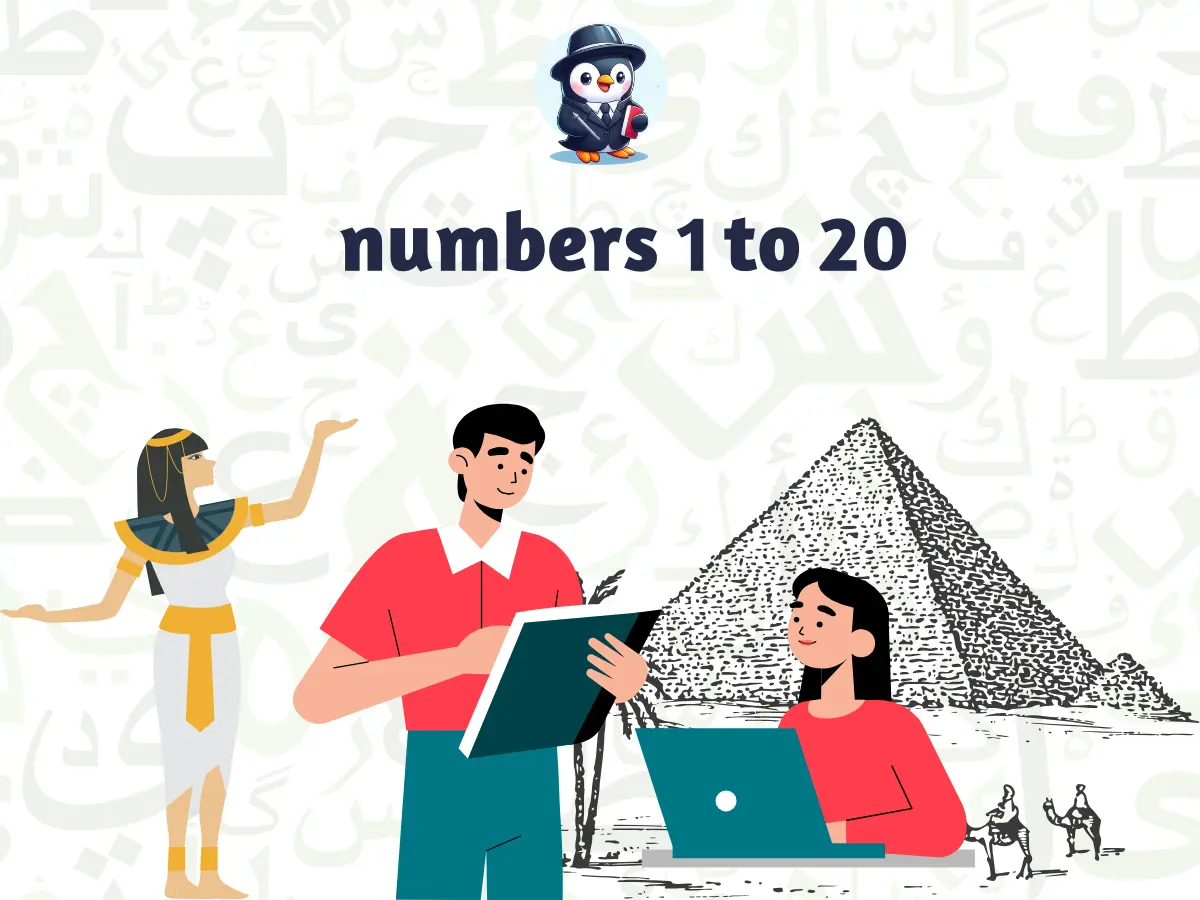
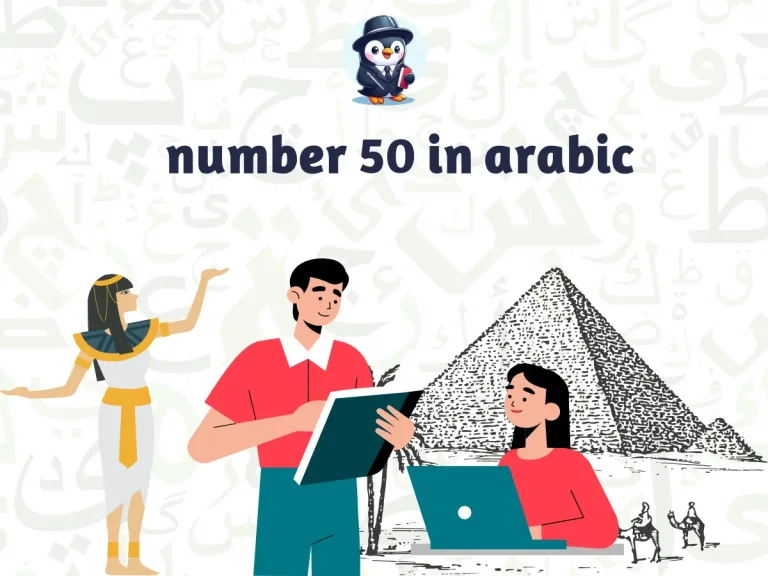
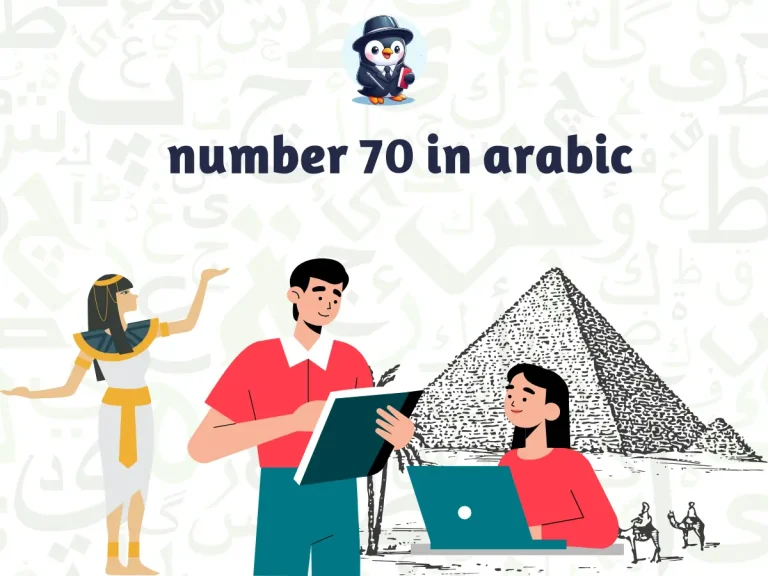

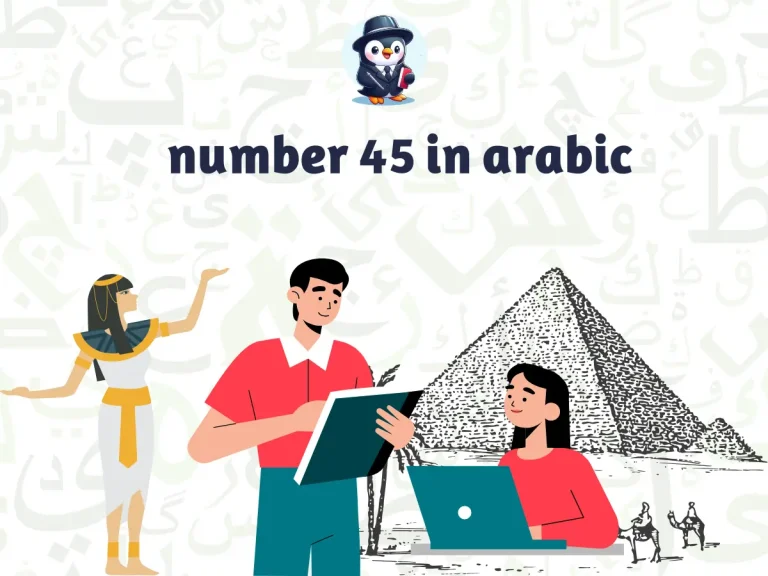

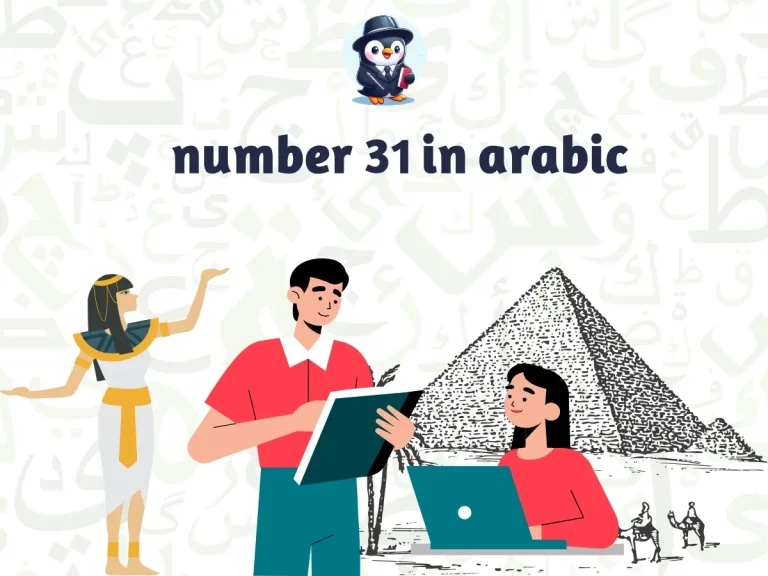
Greetings from Ohio! I’m bored at work so I decided to
check ouut your website on myy iphone during lunch break.
I enjoy the knowledge you present here and can’t wait to take a look
when I geet home. I’m shocked att how fast your blog loaded
on my mmobile .. I’m not even using WIFI, just 3G ..
Anyhow, superb blog!